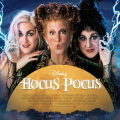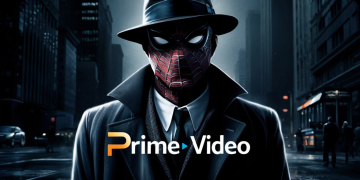Reimagining the Sacred: The Empowering Journey of Mary in Netflix's "Mary"
- Feb 24, 2025

Her story, imbued with significance and reverence, transcends generations, yet few have delved deeply into the lived experience of the Virgin Mary. A remarkable film, Mary, makes its debut on Netflix, taking a refreshing and thrilling approach to a narrative often considered sacred. While remaining anchored in the biblical framework, this cinematic piece reshapes Mary’s existence, presenting her not just as a passive figure in an unfolding divine plan, but as a dynamic woman navigating her destiny. With action-packed scenes and a deep exploration of her character, this film aims to reinvigorate the dialogue surrounding her life, enriching our understanding of both the historical and the human experience. Through the lens of a modern cinematic style, Mary seeks to connect with audiences from diverse backgrounds of life as it examines themes of empowerment, destiny, and resilience.
Setting the Stage
The narrative kicks off long before Mary’s iconic moments. It begins with the heartfelt struggles of her parents, Joachim and Anne, who face the trials of infertility. Their plight, marked by a profound longing for a child, serves as the emotional backbone that frames Mary’s eventual arrival. The divine intervention comes in the form of the Angel Gabriel, who promises them a miraculous child destined for greatness. This opening not only lays the groundwork for Mary’s significance but highlights the profound hope and faith of her family.
Mary’s Early Years
As the film unfolds, we transition into Mary’s formative years. Growing up in a devout household, she navigates the complexities of her identity amidst societal expectations. Played by Noa Cohen, Mary's character emerges as both relatable and strong-willed, illustrating her internal conflict and desire for independence in an environment that frequently aims to control her fate.
Meeting Joseph
The narrative then introduces Joseph, Mary’s future husband, portrayed by Ido Tako. Their courtship unfolds as one of mutual respect and deep connection, showcasing a partnership that is rich in affection yet faced with the larger divine narrative that will soon envelop their lives. This tender relationship contrasts sharply with the external challenges they will soon confront.
Divine Announcement

One moment changes everything when Gabriel reappears to deliver the life-altering news of Mary’s divine pregnancy. The announcement is peppered with tension, as Mary grapples with overwhelming fear and disbelief about her new role in the divine plan, showcasing her vulnerability even as she wrestles with her unexpected destiny.
A World in Turmoil
In parallel, the looming threat of King Herod—masterfully brought to life by Anthony Hopkins—introduces a vocal adversary whose quest for power represents an existential threat to Mary's burgeoning role as a mother to the Savior. Hopkins delivers a chilling performance that captures the essence of tyranny, making Herod an unforgettable antagonist whose malice impacts every facet of Mary’s life.
The Fight for Agency
Notably, the film emphasizes Mary’s agency. As she learns about her destiny, she simultaneously fights against societal and personal constraints. Caruso, the director, paints her as an active participant rather than a mere pawn in a divine chess game. This portrayal elevates Mary’s narrative, making it a narrative focused on determination and perseverance instead of passivity.
The Temptation of Mary
An engaging sequence depicting Mary’s temptation deepens our understanding of her character. As she confronts the embodiment of evil, the character of Lucifer presents her with alluring alternatives to her path. Instead of succumbing, Mary bravely reaffirms her commitment to her divine mission, showcasing her profound strength and resolve.
Expanding the Narrative
This film diverges from the traditional narrative by placing a significant focus on Mary’s life before the well-trodden Nativity scene. This choice invites audiences to invest in her journey beyond a single moment in time, navigating her struggles and triumphs as a woman living under oppressive rule. Caruso’s decision has sparked debate among scholars and audiences alike, as it expands the narrative landscape, enriching the viewer’s experience.
The Visuals and Cinematography
From stunning landscapes to intricately designed costumes, Mary boasts visuals that are nothing short of breathtaking. The cinematography shines particularly in key sequences, offering an elaborate weave of visuals and auditory experiences that encapsulate the ancient world. However, despite these strengths, the film does encounter some moments where the execution falters, occasionally leaning too heavily on modern sensibilities.
Character Dynamics
At the heart of Mary are its character dynamics. The interplay between Cohen and Hopkins anchors the narrative, needing no words to convey the tension that arises between their characters. This magnetic relationship enhances the emotional stakes, compelling audiences to grapple with the moral complexities and dilemmas faced by both figures.
The Reaction to Community
The movie boldly presents Mary’s community. The vibrant portrayal of her relationships with other women in her life around her illustrates the complicated tapestry of support, rivalry, and shared struggles. Within this aspect, viewers may recognize universal themes of solidarity and sisterhood that transcend the film’s ancient setting.
Confronting Controversy
Unsurprisingly, the film’s reimagining of biblical tales has ignited conversations around its faithfulness to scripture. Some critics argue that focusing on pre-Nativity episodes risks overshadowing the core message of the story. Despite this, the choice to explore Mary’s life broadens the audience’s understanding of her character, inviting reflection on what it means to fulfill a divine purpose.
The Overall Pacing
While certain segments shine brightly, some scenes contribute to a pacing issue throughout the film, leading to moments of lingering that lack the necessary tension or payoff. The screenplay occasionally stumbles, contemplating ideas that don’t fully resonate with the audience. This uneven pacing can detract from the film’s overall immersive experience.
Conclusion: A Faithful Adaptation?
Ultimately, Mary crafts a narrative that aligns well with both thrilling cinema and spiritual reflection. It successfully caters to audiences who might not typically engage with such stories, presenting a nuanced exploration of a figure often veiled in saintly awe. It invites viewers to grapple with weighty themes, leaving them to ponder the depth of Mary’s experience beyond mere prophecy and prayer. With the holiday season soon approaching, this film is poised to captivate hearts and minds alike. It opens a portal for reflection and connection, advocating a celebration of resilience and faith. Available for set to premiere on Netflix on December 6, 2024, this film is expected to be one of the highlights offerings of the season.







